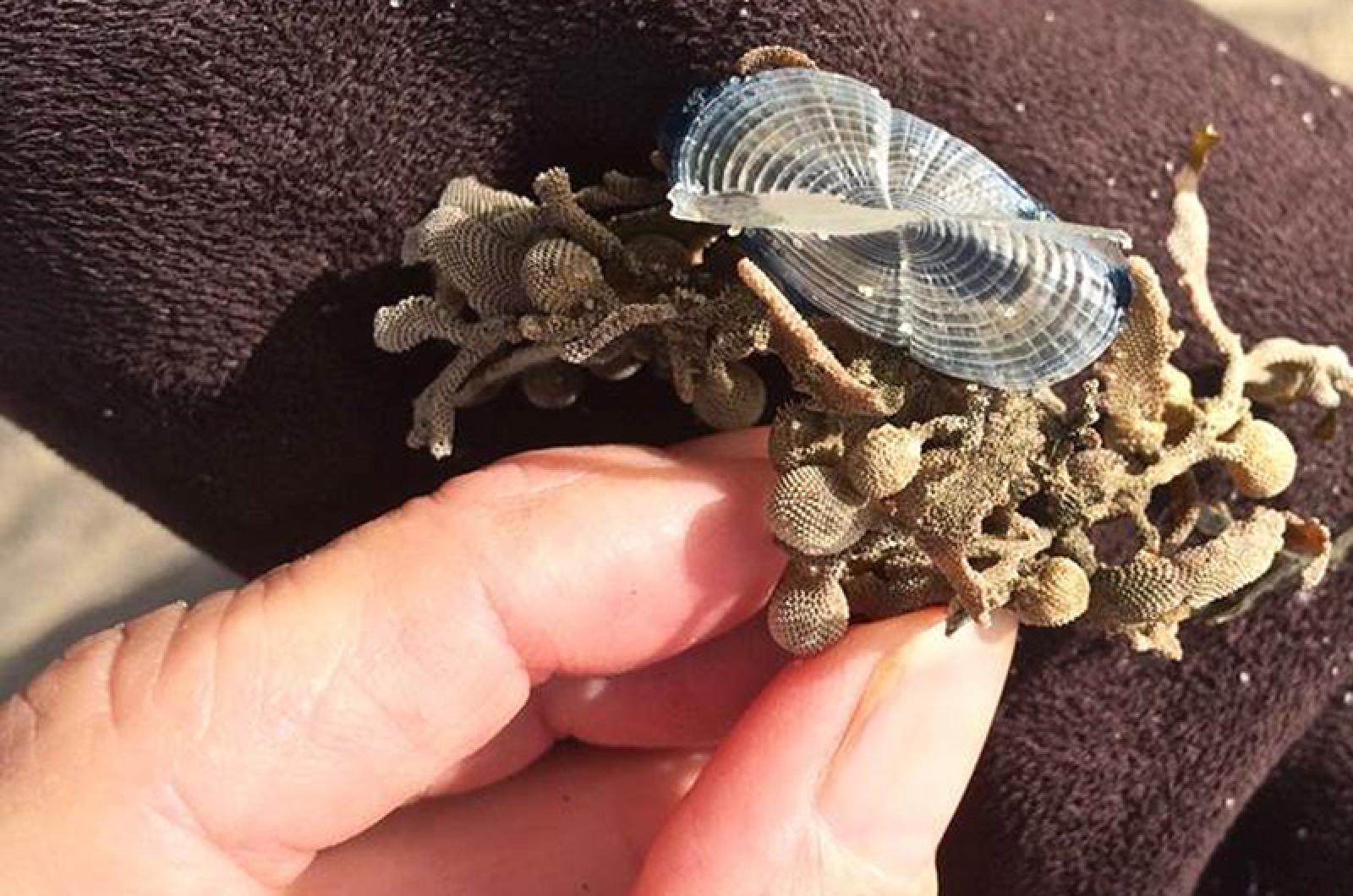“The pessimist complains about the wind; the optimist expects it to change; the realist adjusts the sails.”
This was the division of humanity’s types offered by author and poet William Arthur Ward. It’s an observation that is probably familiar to many Islanders, but one that applies also to a sea organism that goes by the odd name of Velella velella.
Velella velella is a creature that can’t choose one of Ward’s options. Although it spends its time in the water and has a sail, it is at the mercy of the wind. And sometimes the wind is not velella’s friend.
Such was the case last week when hundreds of these organisms were found on south-facing Island beaches, including Black Point, Philbin and Quansoo. Thomas Hodgson, Prudy Burt, Rick Karney and Debra Gaines all reported seeing these unique animals.
Also called “by-the-wind sailor,” “purple sail,” “little sail,” and “sea raft,” velella is a strange mariner that appears as a small, one to three-inch bluish blob with an almost opaque vertical appendage. One finder described it as a “funny little package,” before inquiring after its identity.
Its identity is definitely as curious as its name. Velella velella is a hydrozoan, in the phylum Cnidaria, distantly related to the Portuguese man-of-war and other jellyfish, though not considered one itself, even if it looks like one.
Regardless of this confusing classification conundrum, velellas have a lifestyle all their own. They are considered pleustons, a term that describes an organism that exists at the interface of air and water. Velella reside at the ocean’s surface in a strange upside-down way. Its ‘sail’ sticks out above the water, while its body parts, including its mouth and tentacles, are below the water. Imagining a centerboard boat upside down will give you the idea.
Dining on plankton just below the water is how velellas obtain food. Their carnivorous ways are aided by stinging cells called nematocysts on their (below-water) tentacles that inject toxin into their prey. This toxin is usually not a problem for humans. However, take
care if you touch the underside of this animal and refrain from touching your face or other sensitive areas, since irritation and itching may result.
Don’t ask about reproduction, since I am still confused by its mating methods myself. Earlier research explained that each velella is actually a colony of animals, rather than a single individual, and reproduction is achieved by asexual budding, resulting in the shedding of mini-me’s called medusas. Newer studies suggest that each velella is a highly specialized individual that breeds through an alternation of generations between polyp and medusa.
But perhaps what was the most fascinating aspect is the left and right-handed nature of these beasts. Most are left-handed, meaning their sail resembles a backslash on a computer keyboard. The less common “right-handed” velellas appear as more like a forward slash. Interestingly, velalla’s sails align along wind direction. This means that their movement is generally downwind, at a small angle off the wind.
However, this is where they can find trouble. If the wind shifts, these usually ocean-dwelling beings become virtually rudderless. Thus, they can strand en masse on beaches, pushed by strong and sometimes changing winds. That is what seems to have occurred on our south shore. Interestingly, not many instances of these beachings were recorded on the East Coast, save for a few examples in Florida. The West Coast experiences this velella-stranding phenomenon every few years.
Author Ella Wheeler Wilcox’s opinion that it is “the set of the sail that decides the goal, and not the storm of life” is somewhat reflective of this little wanderer’s existence. But to be more accurate for the helpless, hopeless velellas off our shores, it is both the storms of life and the set of the sail that decide the goal.
Suzan Bellincampi is director of the Felix Neck Wildlife Sanctuary in Edgartown, and author of Martha’s Vineyard: A Field Guide to Island Nature.




Comments (2)
Comments
Comment policy »